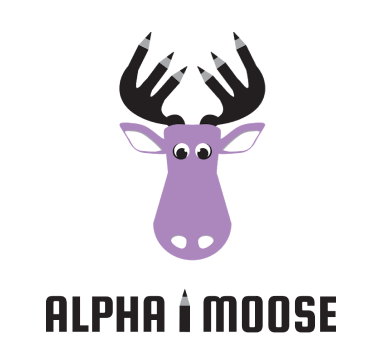Rise of the Machine: Will AI Kill Human Copywriting?
- Alpha Moose
- Jun 13, 2022
- 2 min read

AI, or Artificial Intelligence, is everywhere.
Whether it’s Google Maps guiding you to that new restaurant, Alexa telling you a joke, or your Roomba doing a quick sweep of your living room before your guest shows up, AI is a daily staple in making our lives easier. It’s also making its way into our work lives. Self-checkout stations at grocery stores, robotic arms that assist with construction projects, and automated web design customization all make businesses more profitable, more efficient, and safer for both customers and employees.
One of the many industries that has seen an increase in AI is copywriting. Businesses can purchase content creation software, into which they input keywords, outlines, and phrases. From just those few key pieces, the software will then create subject lines, drafts of social media posts, blogs, and product descriptions, creating more content faster than any human counterpart.
As you can imagine, some copywriters are concerned that AI software will cost them jobs, since it’s impossible for even the fastest typist in the world to come up with the same amount of copy.
No matter how many variations an AI system comes up with, though, it still requires a human to make top quality content. First, the programs don’t fact check themselves. They rely only on what’s given to them, so it’s up to humans to make sure that the content, while new and fresh, is correct.
These programs also miss the nuances of human expressions. They’ll end sentences abruptly and sound robotic. They’ll miss pop culture references, slang, current events, and humor; all things that make engaging copy. A human writer is not just important for basic editing, but also makes sure the copy has that brand’s (or copywriter’s) voice.
This automated content is a great starting point and can help prevent writer’s block, since the writer will be able to focus on perfecting copy instead of coming up with a new idea in the first place. Most of these programs present multiple drafts for the given inputs, so these could be used to provide variations on the same ad, proposal, or email campaign, saving copywriters valuable time. And if someone isn’t a copywriter, these programs provide a passable amount of copy to get them started.
These programs are meant to supplement human creativity by providing a base, but it is up to the author to finish the program’s output after its initial creation. Ultimately, these programs are more of a brainstorming tool than a one-stop-writing-shop. Quality copywriting is a talent, and while AI-powered content creation can be an asset, it’s no substitute for the humanity and creativity of an experienced copywriter.







Comments